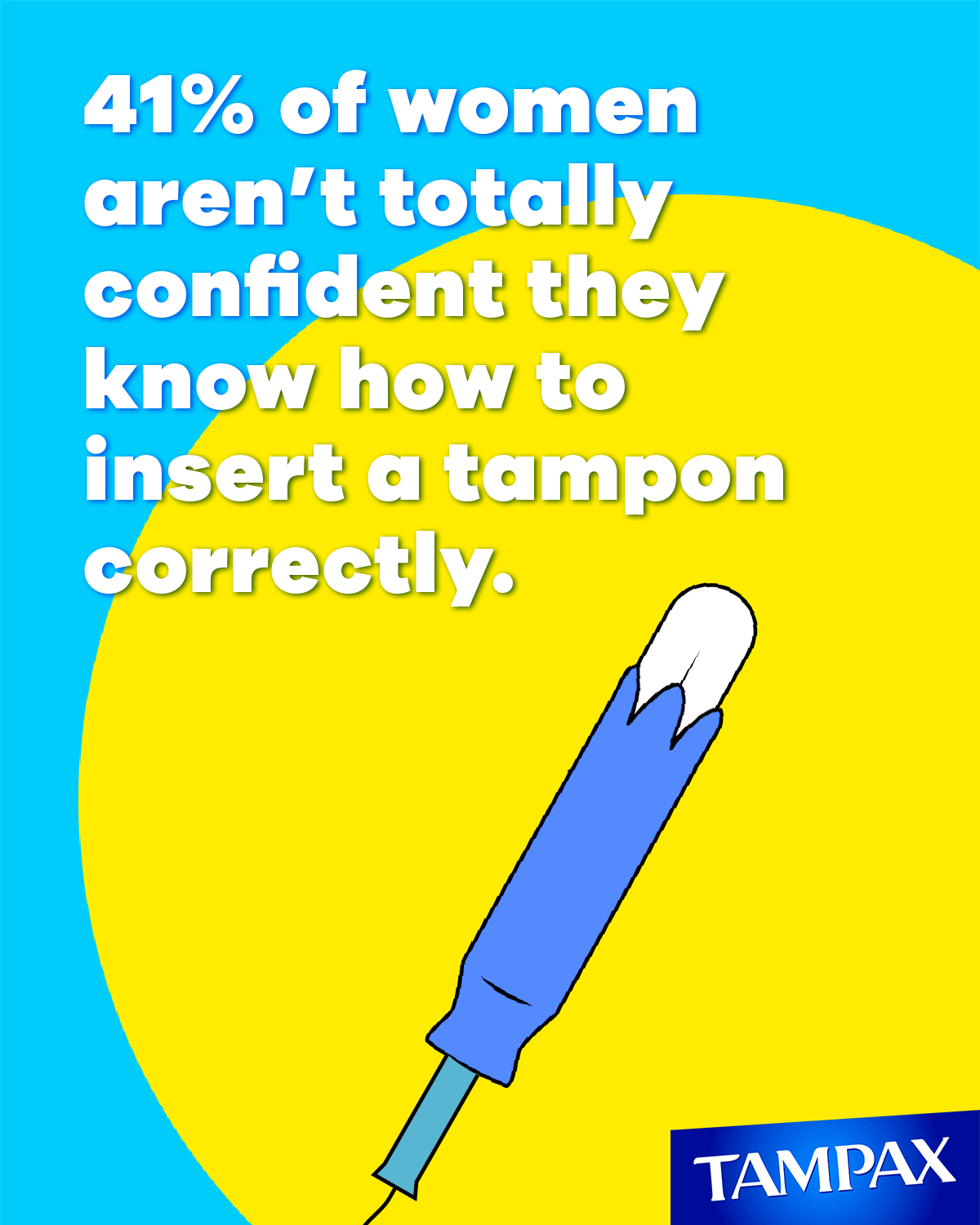Learning how to put a tampon in correctly is an essential skill for every woman navigating menstrual health. Many women feel anxious or uncertain about using tampons for the first time, but with proper guidance and practice, it becomes a comfortable and convenient choice. This guide will walk you through the process step by step, ensuring you feel confident and empowered.
Menstruation is a natural part of life, and managing it effectively is crucial for maintaining comfort and convenience. For many women, tampons offer a discreet and reliable option. However, the initial experience of inserting a tampon can be daunting without the right information and support.
This article aims to demystify the process of using tampons, offering clear instructions and expert advice. Whether you're a first-timer or simply looking to refine your technique, this guide will provide the tools you need to insert a tampon correctly and comfortably.
Read also:Exploring The Rise Of Haerin Erome A Comprehensive Guide
Table of Contents
- Understanding Tampons: What Are They and How Do They Work?
- Preparing for Your First Tampon Experience
- Step-by-Step Guide: How to Put a Tampon in Correctly
- Tips for Comfort and Confidence
- Common Questions About Tampons
- Debunking Myths About Tampons
- Health and Safety Considerations
- Understanding Different Types of Tampons
- Exploring Alternatives to Tampons
- Conclusion: Empowerment Through Knowledge
Understanding Tampons: What Are They and How Do They Work?
Tampons are small, cylindrical devices designed to absorb menstrual flow internally. They are typically made of cotton or rayon and come in various sizes to suit individual needs. The primary function of a tampon is to absorb blood inside the vagina, preventing leaks and ensuring comfort throughout the day.
Keyword variation: Many women wonder if tampons hurt or if they are difficult to use. Understanding how they work can alleviate these concerns. When inserted correctly, tampons should feel comfortable and secure.
Tampons come with or without applicators, depending on personal preference. Applicator tampons are often recommended for beginners, as they simplify the insertion process. Non-applicator tampons, on the other hand, are more eco-friendly and compact.
Why Choose Tampons?
Tampons offer several advantages over pads, including:
- Discreet and easy to carry
- No visible bulk under clothing
- Allows for swimming and other physical activities during menstruation
- Longer wear time compared to pads
Preparing for Your First Tampon Experience
Before attempting to insert a tampon, it's important to prepare both mentally and physically. This preparation can significantly enhance your experience and reduce anxiety.
Keyword variation: Learning how to put a tampon in correctly begins with understanding your body and feeling comfortable with the process.
Read also:Maximilian David Anthony A Comprehensive Guide To His Life And Achievements
Here are some steps to help you prepare:
- Relax: Anxiety can cause the vaginal muscles to tighten, making insertion more challenging. Take deep breaths and try to stay calm.
- Choose the right time: Attempt insertion when your flow is moderate to heavy, as this will make the process easier.
- Select the appropriate size: Start with a light or regular-sized tampon, especially if you're a beginner.
Choosing the Right Tampon
Not all tampons are created equal. Consider the following factors when selecting a tampon:
- Flow absorption level (light, regular, super)
- Presence of an applicator
- Material (cotton or rayon)
Step-by-Step Guide: How to Put a Tampon in Correctly
Inserting a tampon correctly requires a systematic approach. Follow these steps to ensure a smooth and comfortable experience:
- Wash your hands: Clean hands reduce the risk of infection.
- Get into a comfortable position: Sit on the toilet or squat in the shower for stability.
- Unwrap the tampon: Remove the wrapper carefully, keeping the string intact.
- Position the tampon: Hold it with the string hanging down and gently insert it into the vagina.
- Push it in: Use the applicator to guide the tampon further into place until it feels comfortable.
- Check the string: Ensure the string is visible and accessible for easy removal.
Keyword variation: By following these steps, you can learn how to put a tampon in correctly and avoid common mistakes.
Troubleshooting Common Issues
If you encounter difficulties, consider the following tips:
- Relax your muscles by taking deep breaths.
- Experiment with different positions to find what works best for you.
- Try a smaller or larger tampon size if necessary.
Tips for Comfort and Confidence
Comfort is key when using tampons. Here are some additional tips to enhance your experience:
Keyword variation: Achieving comfort while learning how to put a tampon in correctly often involves trial and error.
- Practice makes perfect: Don't be discouraged if it doesn't work the first time. Keep trying until you find a method that suits you.
- Experiment with different brands: Each brand offers unique features, so explore options to find your favorite.
- Stay informed: Educate yourself about menstrual health to feel more confident in your choices.
Common Questions About Tampons
Many women have questions about tampons. Here are some frequently asked questions:
- Can tampons get lost inside the body? No, tampons cannot get lost as long as the string is left intact.
- Will tampons affect my virginity? Using a tampon does not affect your virginity. It may stretch the hymen slightly, but this is normal.
- How often should I change a tampon? Change tampons every 4-8 hours to maintain hygiene and prevent infection.
Addressing Concerns
If you have specific concerns, consult a healthcare professional for personalized advice.
Debunking Myths About Tampons
There are several myths surrounding tampon use. Let's address some of the most common ones:
- Myth: Tampons are painful to insert. Fact: When inserted correctly, tampons should not cause pain.
- Myth: Tampons can cause infections easily. Fact: As long as you change them regularly, tampons are safe to use.
- Myth: Tampons are only for heavy flows. Fact: Tampons come in various sizes to accommodate different flow levels.
Health and Safety Considerations
Using tampons safely is crucial for maintaining your health. Follow these guidelines:
- Avoid Toxic Shock Syndrome (TSS): Change tampons regularly and use the lowest absorbency level needed.
- Practice good hygiene: Wash your hands before and after insertion.
- Monitor for discomfort: If you experience pain or irritation, consult a healthcare professional.
Recognizing Signs of TSS
Be aware of the symptoms of Toxic Shock Syndrome, such as:
- Fever
- Rash
- Vomiting
- Dizziness
Understanding Different Types of Tampons
Tampons come in various forms to suit individual preferences. Explore the options:
- Applicator tampons: Easier for beginners, with a plastic or cardboard tube for insertion.
- Non-applicator tampons: More environmentally friendly, requiring manual insertion.
- Organic tampons: Made from natural materials, ideal for those with sensitivities.
Finding the Right Fit
Experiment with different types to discover what works best for you.
Exploring Alternatives to Tampons
While tampons are a popular choice, other menstrual products are available:
- Menstrual cups: Reusable and eco-friendly.
- Pads: External absorbents offering a different level of comfort.
- Period underwear: Leak-proof underwear for light flow days.
Conclusion: Empowerment Through Knowledge
Learning how to put a tampon in correctly is a valuable skill that enhances menstrual health management. By following the steps outlined in this guide and staying informed, you can achieve confidence and comfort.
Keyword variation: Remember, mastering tampon use takes practice, but the benefits make it worthwhile.
We encourage you to share this article with others who may find it helpful. For more information on menstrual health, explore our other resources and leave a comment below with your thoughts or questions.
Stay empowered and informed!


